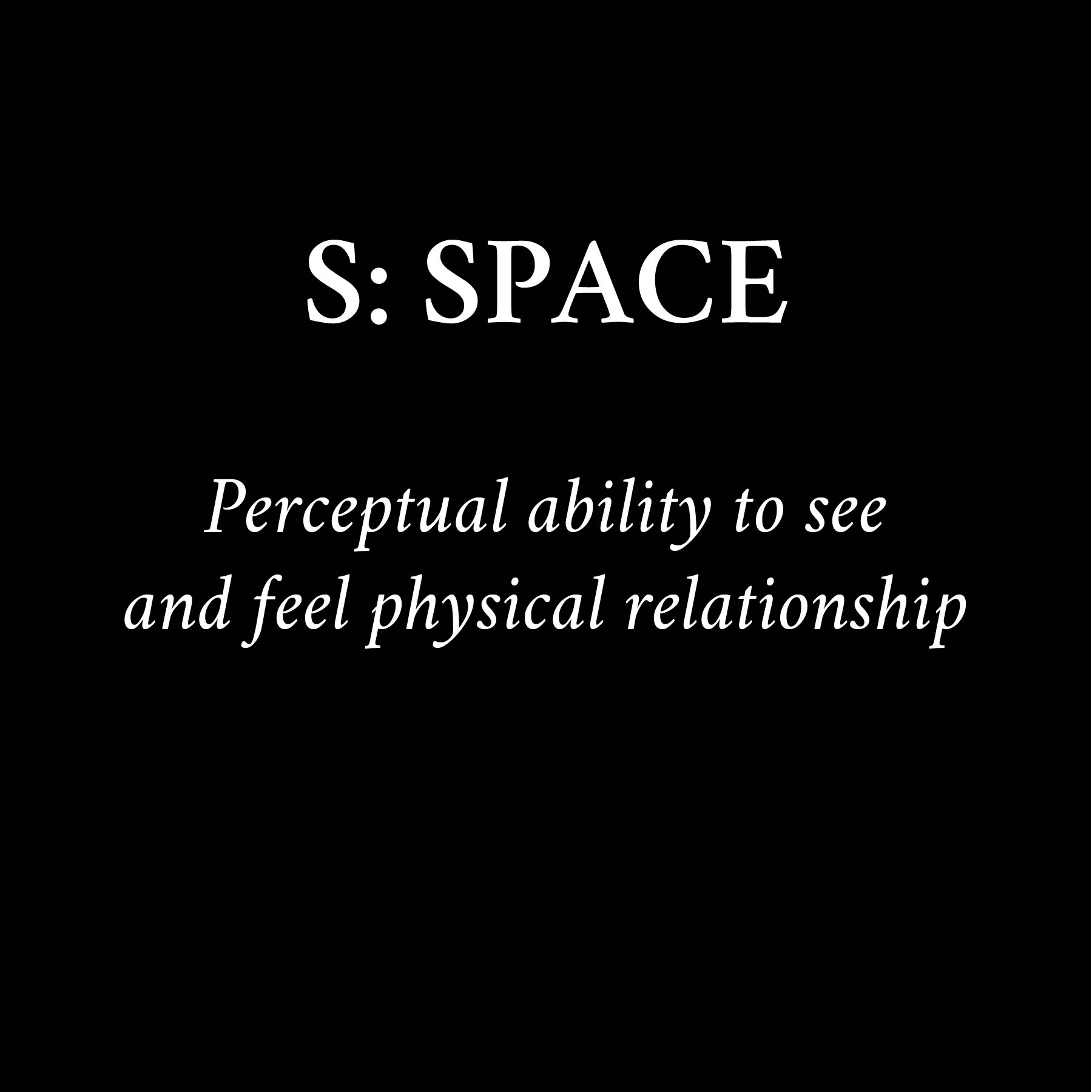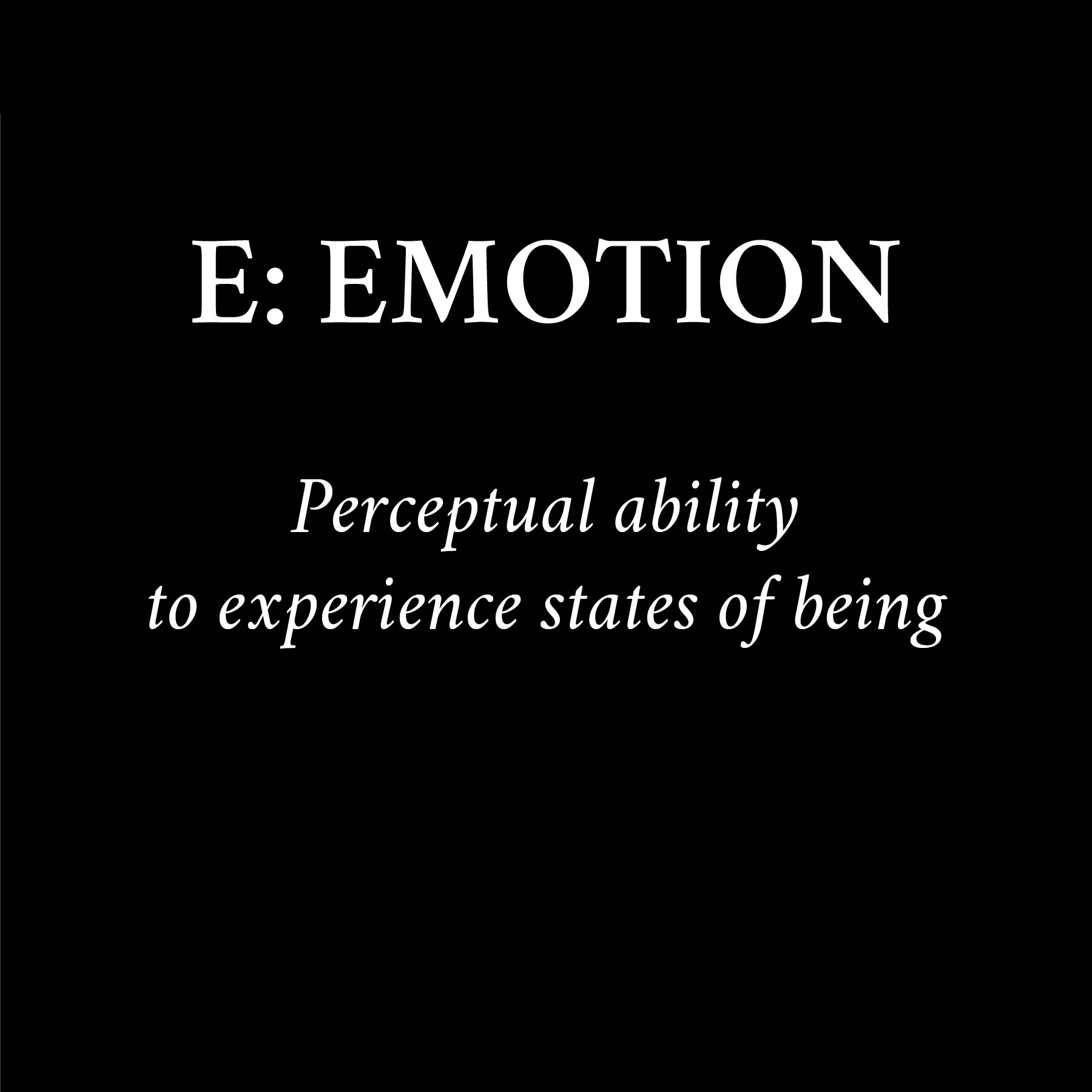THE MATERIALS
The seed of the entire work of The Six Viewpoints is found in the simple act of standing in space. From this perspective the artist is invited to read and be educated by the lexicon of daily experience: The information of space, the experience of time, the familiarity of shapes, the qualities of kinetics, the ways of logics, and the states of emotional being and exchange. These are the six materials named in The Six Viewpoints that constitute the basic elements of deconstructed theater. Working directly with these materials the artist begins to learn of performance through each essential languages as an independent intelligence.
These materials or perceptual languages can be listed in any sequence. You see them listed below as an anagram, SSTEMS, as in stems or a strange way to spell systems.
In order to study The Six Viewpoints it is necessary to release traditional concepts of theater. This process is not as drastic as it sounds. It does not mean letting go of history, it simply means adding a change of perspective. The experience of entering The Six Viewpoints is entirely different from traditional theater training. Instead of beginning with the idea of making theater this approach begins with taking theater apart. To accomplish this task it is necessary to be practiced at deconstruction or separating the whole into its essential parts. The whole is broken down into its basic materials and their languages. This activity has to be done with great care and respect for the whole. It is essential to know where the seams lay so separating can be done with clarity otherwise the materials and their languages may be ruined making it impossible to deal with them in their integrity. It is like taking a shirt apart at the seams as opposed to simply cutting it into arbitrary section. When the material of space is located with clarity the artist can begin a dialogue with its languages discovering how to observe and participate with space.
Over the years of investigation a grounded articulation of these materials the philosophy of postmodernism has emerged along with many startling perspectives and revelations on: the nature of communication; the nature of learning, the nature of social structure, the nature of discourse, and the nature of negotiation. Interaction with these substantive issues joins this theory into a discourse on society and existence, fulfilling, as a true artistic theory should an accountability of its vision.
This work does not have a pre-existing idea of what theater is, how it should be created, what it should say or how it should say it. In entering this work the artist finds that they take possession of the stage and are anchored in its realities free of the opinions of others about how to make theater. In this undertaking the artist is challenged to develop self-guidance, the discipline of keeping focused and the ability to have perspective. To accomplish this requires a type of physical training that focuses on the body in great detail. This requires educating the mind and body to its function. Underlying training such as Alexander work, body Mind Centering, Contact Improvisation, Allen Wayne work, Hamilton Floor work educates the instrument in depth without culturing patterns of movement. This type of approach is essential in that it develops availability to sense rather than to produce.
The simplicity of The Six Viewpoints is based on one on one contact with the basic materials. This approach aligns itself with the eastern practices that rely on the student to find their own truth as part of the understanding encompassing all of life. In this work there is no teacher, no authority to pronounce achievement or failure beyond understanding that any part is a part of the whole.
The implications of this event called The Six Viewpoints, the strict and unique discipline it requires, the philosophical system that it creates, the humility and strength it imparts, the wisdom it councils, the openness it engenders, the negotiation it facilitates in its attitude, the equality it teaches, the joy of joining a greater whole, the profound relief that you are not required to choose but are invited to participate, the promise and knowledge that you are contributing just by being there in the dialogue have made it clear to many people why one would want to know this perspective on theater.







